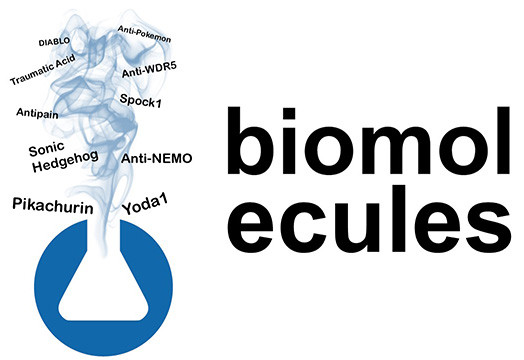Written by Emily Locke
DMD, FOXP2, 10-hydroxy-10,11-dihydrocarbamezepine-D4... Genes, proteins and chemicals often have rather complicated, meaningless names. This is not surprising, because when the human genome was decoded completely and the sequencing methods became cheaper and cheaper, a standardized nomenclature was needed. The fact that this nomenclature is not always helpful, became clear just two years ago, when 27 genes had to be renamed. The reason for this was the data processing program Excel, which automatically reformatted the gene names as dates. For example, the tumor suppressor gene “deleted in esophageal cancer 1”, which was formerly known as dec1, is now called delec1 to avoid problems when entering it in data tables. In addition, the Gene Nomenclature Committee adjusted the naming guidelines to meet the requirements of the program [1].
The fact that science has subjected itself to the software Excel might make one smile a bit. But it gets even more interesting when looking at descriptions that differ from the standardized nomenclature. Especially in the 1990s, scientists gave their discoveries quite creative and partly rather unusual names! And of course, the extensive Biomol range also includes some products with bizarre names. But what exactly hides behind Yoda, Pokemon, Spock & Co.? What are these products used for in research? And how did they come by their unusual names? Here’s a list of the top 10 Biomol products with the funniest names - and what’s behind them!
P.S.: Of course we have several products for each name. But for the sake of simplicity, we limit ourselves here to one product per name.
These names (and products) await you:
Click on the respective product name to go directly to the corresponding section.
| Product | Product Type | Supplier |
| Sonic Hedgehog | Recombinant protein | Rockland Immunochemicals |
| Anti-Pokemon | Antibody | NSJ Bioreagents |
| Pikachurin | ELISA | Assay Genie |
| Anti-NEMO | Antibody | Atlas Antibodies |
| Spock1 | Recombinant protein | Elabscience |
| Yoda1 | Biochemical | Cayman Chemical |
| Anti-WDR5 | Antibody | Bethyl Laboratories (FORTIS) |
| Traumatic Acid | Lipid | Cayman Chemical |
| Antipain | Biochemical | Cayman Chemical |
| DIABLO | Recombinant protein | Elabscience |
Sonic Hedgehog
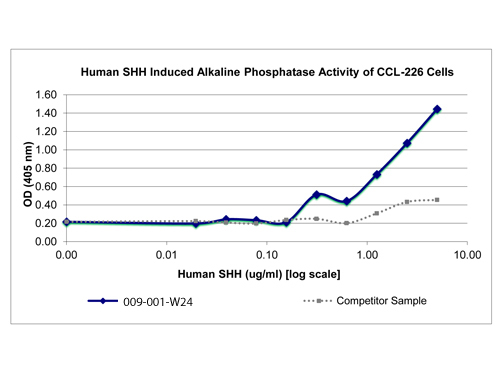
One of the best-known representatives of unusual biological names is probably sonic hedgehog. The gene, which is named after the video game character “Sonic the Hedgehog”, has already been the cause for heated discussions about the (in)appropriateness of certain gene names. sonic hedgehog is associated with so-called holoprosencephaly, a prenatal malformation of the forebrain and face. For this reason, the name was criticized by various people in research and medicine as being too silly. The reasoning was that mentioning a mutation in the sonic hedgehog gene might not be well received when talking to a patient or their family about the associated disorder. However, the controversy has since died down and the problem of inappropriateness in certain situations is avoided by using abbreviations [2].
But enough about the name - what is behind it? The sonic hedgehog gene encodes a secretory intercellular signaling molecule that plays a crucial role in regulating mammalian embryonic development. It controls organogenesis as well as the organization of the central nervous system and many other parts of the body. In adult tissues, the Sonic Hedgehog protein also contributes critically to differentiation and proliferation, which is why abnormal activation of the signaling pathway can lead to various types of cancer [3].
Anti-Pokemon
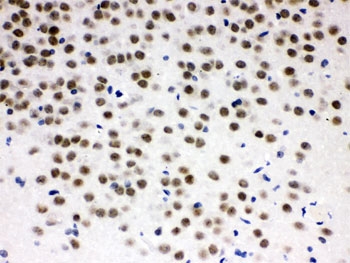
Our next candidate has already caused a stir as well: the original name “Pokemon” refers to the “POK erythroid myeloid ontogenic factor”, a cancer-promoting protein in vertebrates. However, the company ”Pokémon USA” did not like the fact that its name was associated with a cancer-causing gene and threatened to take legal action in December 2005. Since then, the protein has been officially called “zinc finger and BTB domain-containing protein 7” (ZBTB7) – definitely a downgrading...
Pokemon represses the transcription of certain proteins and thus indirectly inhibits the function of the major tumor suppressors RB and p53. As an oncogene, it is overexpressed in many types of cancers, such as lung, liver and prostate cancer [4]. Thus, antibodies against the ZBTB7 protein are of great interest in cancer research and can be used for various applications, such as ELISAs, western blots and immunohistochemistry [5].
Pikachurin
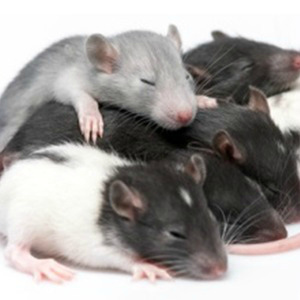
Staying on the subject of Pokémon, even those who aren’t that familiar with the world of Pokémon surely have seen the little yellow fantasy creature Pikachu, which is considered the mascot of the franchise. The fact that the secretory protein Pikachurin was named after the mouse-like figure is based on its similar characteristics: According to Japanese researchers from the Osaka Bioscience Institute, who discovered the protein, the name was inspired by Pikachu’s “lightning-fast moves and shocking electric effects” [6].
Indeed, Pikachurin is thought to play a role in kinetic vision. It is a protein of the extracellular matrix that is expressed at photoreceptor ribbon synapses, where it interacts with the glycoprotein dystroglycan. Thus, Pikachurin is essential for the formation of photoreceptor ribbon synapses, their precise interaction with bipolar dendrites, and for synaptic signaling. Mutations in the dystroglycan complex are associated with several eye disorders, including congenital muscular dystrophy. Since Pikachurin may contribute to increased visual acuity, novel therapies for such visual disorders are conceivable [7].
Anti-NEMO
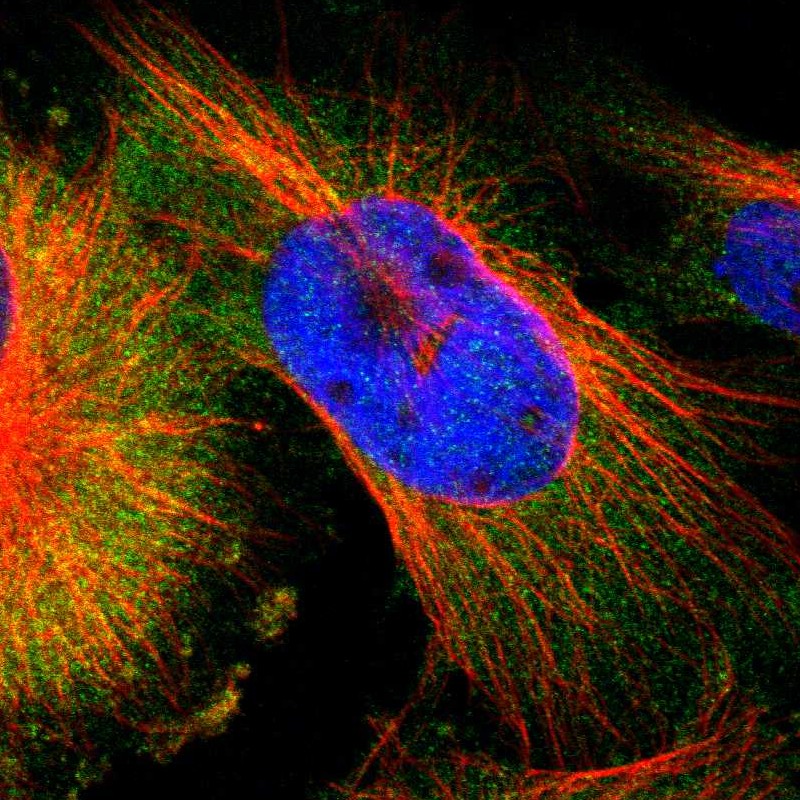
But Pikachurin is not the only protein that bears the name of a cute cartoon character. A small, white-orange striped clownfish has also made it into the scientific naming world: NEMO is the abbreviation for “NF-kappa-B essential modulator” and is also known as IKBKG (inhibitor of nuclear factor kappa B kinase regulatory subunit gamma). It is a subunit of the IkB kinase complex, which activates NF-kB. NF-kB is a protein complex that regulates genes playing an important role in cell survival as well as in the body’s immune response. Therefore, mutations in the ikbkg gene lead to various types of immune deficiencies, such as Incontinentia pigmenti. Thus, antibodies against NEMO are interesting for immunological studies and can be used for immunohistochemistry and western blots [8].
Spock1
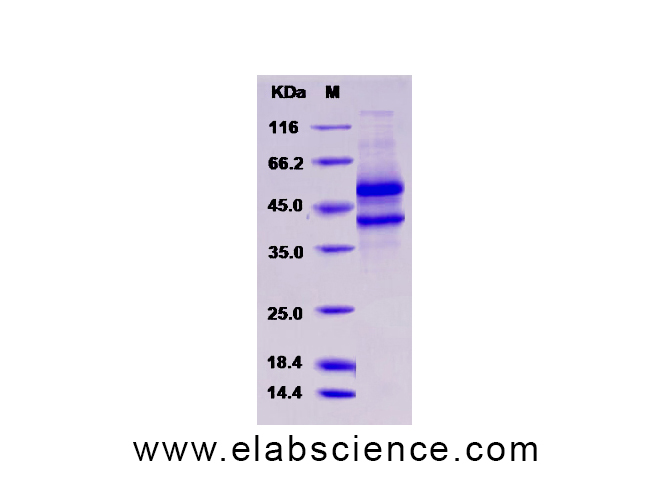
Now let’s dive into the world of science fiction! Commander Spock is probably one of the most well-known characters from the Star Trek series. His identifying feature are his pointed ears - and these are also the reason for the name of this gene: mutations of spock1 lead to pointed ears in zebrafish, which are reminiscent of those of Commander Spock. In addition to spock1, many other mutations have been discovered that influence the development of the hearing system in zebrafish. These include, for example, a van Gogh mutation, named after the famous Dutch painter who cut off one of his ears [9].
spock1 encodes the protein Testican-1, which is a proteoglycan containing chondroitin and heparan sulfate chains. The protein function is not yet fully understood, but it may play a role in cell-cell and cell-matrix interactions, as well as in various neuronal mechanisms in the central nervous system. It is also thought to inhibit proteases [10].
Yoda1
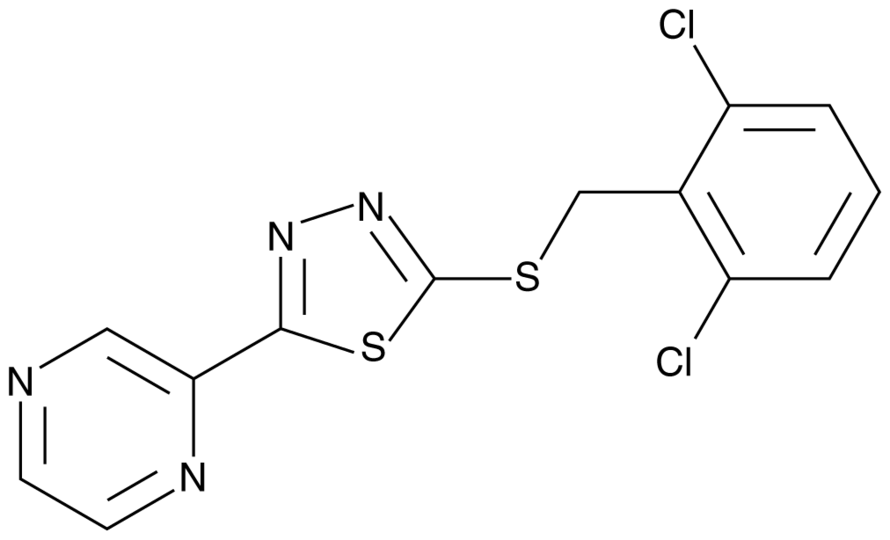
But it’s not just Star Trek fans who get their money’s worth in our Top 10: Science has, of course, also made use of names of characters from the Star Wars universe! Yoda, the little green Jedi master with his quirky grammar, shares his name with an agonist developed for the mechano-sensitive ion channel PIEZO1. PIEZO ion channels are activated through various mechanical stimuli and are important for the regulation of blood pressure and red blood cell volume, among other functions [11]. Yoda1 affects the sensitivity and activation kinetics of mechanically induced responses and is able to open PIEZO1 channels without the involvement of other components. The agonist represents the first evidence for non-mechanical activation of a PIEZO channel and thus can be used to study the regulation and function of these channels. Unfortunately, in their paper the researchers do not reveal how exactly Yoda1 came by its name [12]. However, since they originally named the molecule Obi1, after the Jedi master Obi-Wan Kenobi, it seems likely that they are simply very big Star Wars fans.
Anti-WDR5
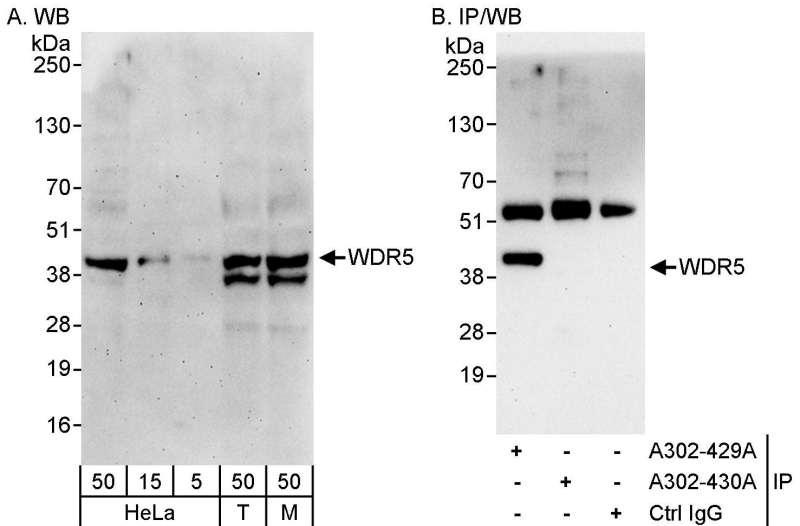
Anti-WDR5 is by no means an association of people who disapprove of the radio station WDR5 - rather, it is an antibody against the WD repeat-containing protein 5, which is encoded by the wdr5 gene. WD repeats are conserved regions of about 40 amino acids that coordinate the formation of multiprotein complexes. They are involved in a variety of cellular processes, such as the cell cycle, signal transduction, or gene regulation. WDR5 consists of 7 WD repeats and plays a crucial role in histone modifications, especially in the K4-methylation of histone H3. Since the protein is essential for the recruitment of the cancer-promoting transcription factor MYC to chromatin, it represents a promising target for pharmacological inhibition of cancer [13]. The so-called WIN-site inhibitors, which inhibit WDR5 at a specific arginine-binding pocket, show high efficiency against certain cancers in vitro, but also inhibit numerous interactions of WDR5 with other proteins. Our understanding of the effects of WIN-site inhibitors is still extremely limited and further research is needed to fully explain the function of WDR5 [14].
Traumatic Acid

This somewhat more drastic name describes a monounsaturated dicarboxylic acid that occurs naturally in plants. It is biosynthetically produced by non-enzymatic oxidation of traumatin, a wound hormone observed in plants during trauma. But don’t worry, using this product in your research certainly won’t cause you any trauma!
Traumatic acid represents a potent reagent for wound healing in plants. It stimulates cell division and growth in higher plants, which contributes to the healing of damaged tissue and leads to the formation of a protective callus [15]. In addition, the acid is part of some pharmaceutical products. For example, it is a component of the gel “Restomyl”, which is used to support the regeneration of oral mucosa after dental procedures in dogs and cats [16].
Antipain
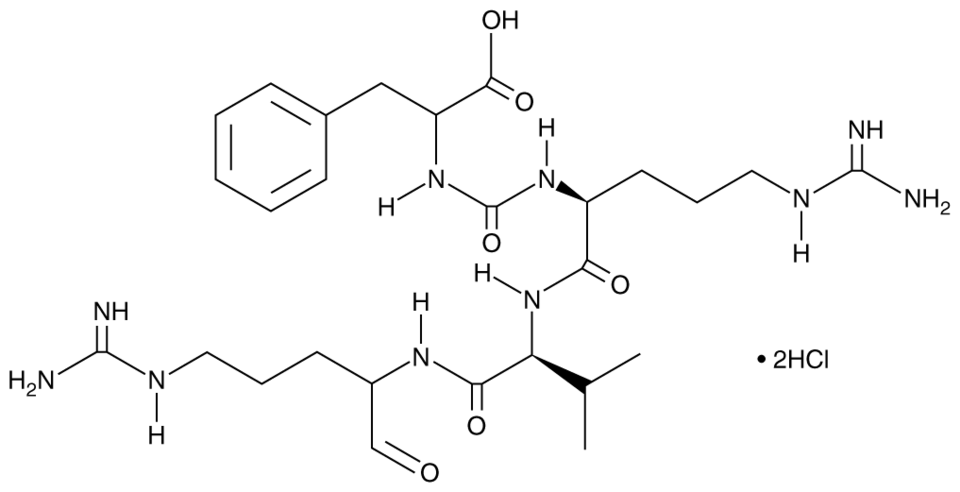
With a formal name like “N2-[[(1S)-1-carboxy-2-phenylethyl]amino]carbonyl]-L-arginyl-N[4[(aminoiminomethyl)amino]-1-formylbutyl]-L-valinamide”, it is no wonder that this substance is better known by its trivial name “antipain”. The oligopeptide got this name because, as a protease inhibitor, it inhibits papain (anti-papain). It also inhibits other serine and cysteine proteases such as trypsin and plasmin. Antipain is a microbial product as it is isolated from bacteria of the genus Actinomyces [17]. Due to its function as a protease inhibitor, antipain has many applications in biochemical research. For example, it is used to evaluate the role of proteases in cell transformations and to identify new proteases [18]. However, a pain-relieving effect of antipain is not known despite its name.
DIABLO
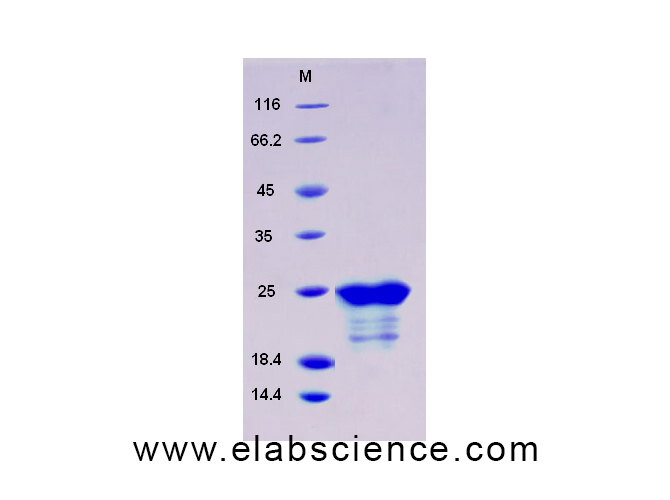
Whether you think of Diablo as the devil, the gaming device, or even the action video game series, there is something quite different behind our last candidate! It is a mitochondrial protein encoded by the diablo gene. The abbreviation stands for “direct IAP binding protein with low pI”, where IAP means “inhibitors of apoptosis proteins” and pI refers to the isoelectric point. But it is also known as SMAC, short for “second mitochondria-derived activator of caspases” [19]. The pro-apoptotic function of DIABLO is also directly derived from these names: It binds IAPs, i.e. apoptosis inhibitors, and thereby liberates caspases, which can then induce apoptosis. Since overexpression of DIABLO reduces cancer progression, small molecule SMAC mimetics have been developed to enhance current cancer therapies [20].
Sources
[1] https://www.sueddeutsche.de/digital/microsoft-excel-genforschung-namen-1.4992440, last access: 12.09.2022.
[2] https://en.wikipedia.org/wiki/Sonic_hedgehog_protein, last access: 12.09.2022.
[3] Jeng, K.-S. et al. Sonic Hedgehog Signaling in Organogenesis, Tumors, and Tumor Microenvironments. International journal of molecular sciences vol. 21,3 758 (2020).
[4] Maeda, T., Hobbs, R., Pandolfi, P. The Transcription Factor Pokemon: A New Key Player in Cancer Pathogenesis. Cancer Res 1; 65 (19): 8575–8578 (2005).
[5] https://www.thermofisher.com/antibody/primary/target/pokemon, last access: 12.09.2022.
[6] http://inventorspot.com/articles/lightningfast_vision_protein_named_after_pikachu_16170, last access: 13.09.2022
[7] Sato, S. et al. Pikachurin, a dystroglycan ligand, is essential for photoreceptor ribbon synapse formation. Nat Neurosci 11, 923–931 (2008).
[8] Rothwarf, D. et al. IKK-γ is an essential regulatory subunit of the IκB kinase complex. Nature 395, 297–300 (1998).
[9] https://www.thenakedscientists.com/articles/science-features/gene-month-spock, last access: 12.09.2022.
[10] https://en.wikipedia.org/wiki/SPOCK1, last access: 12.09.2022.
[11] Cahalan, S. et al. Piezo1 links mechanical forces to red blood cell volume. eLife vol. 4, e07370 (2015).
[12] Syeda R. et al. Chemical activation of the mechanotransduction channel Piezo1. eLife vol. 4, e07369 (2015).
[13] Bryan, A. et al. WDR5 is a conserved regulator of protein synthesis gene expression. Nucleic acids research vol. 48,6 (2020).
[14] Guarnaccia, A. et al. Impact of WIN site inhibitor on the WDR5 interactome. Cell reports vol. 34,3 (2021).
[15] https://de.frwiki.wiki/wiki/Acide_traumatique, last access: 12.09.2022.
[16] https://www.vectavis.de/restomyl-gel/restomyl-gel.html, last access: 12.09.2022.
[17] https://en.wikipedia.org/wiki/Antipain, last access: 12.09.2022.
[18] https://www.fishersci.de/shop/products/antipain-dihydrochloride-thermo-scientific/15465859, last access: 12.09.2022.
[19] https://en.wikipedia.org/wiki/Diablo_homolog, last access: 12.09.2022.
[20] Bai, L. et al. Small-molecule SMAC mimetics as new cancer therapeutics. Pharmacology & therapeutics vol. 144,1 (2014).

